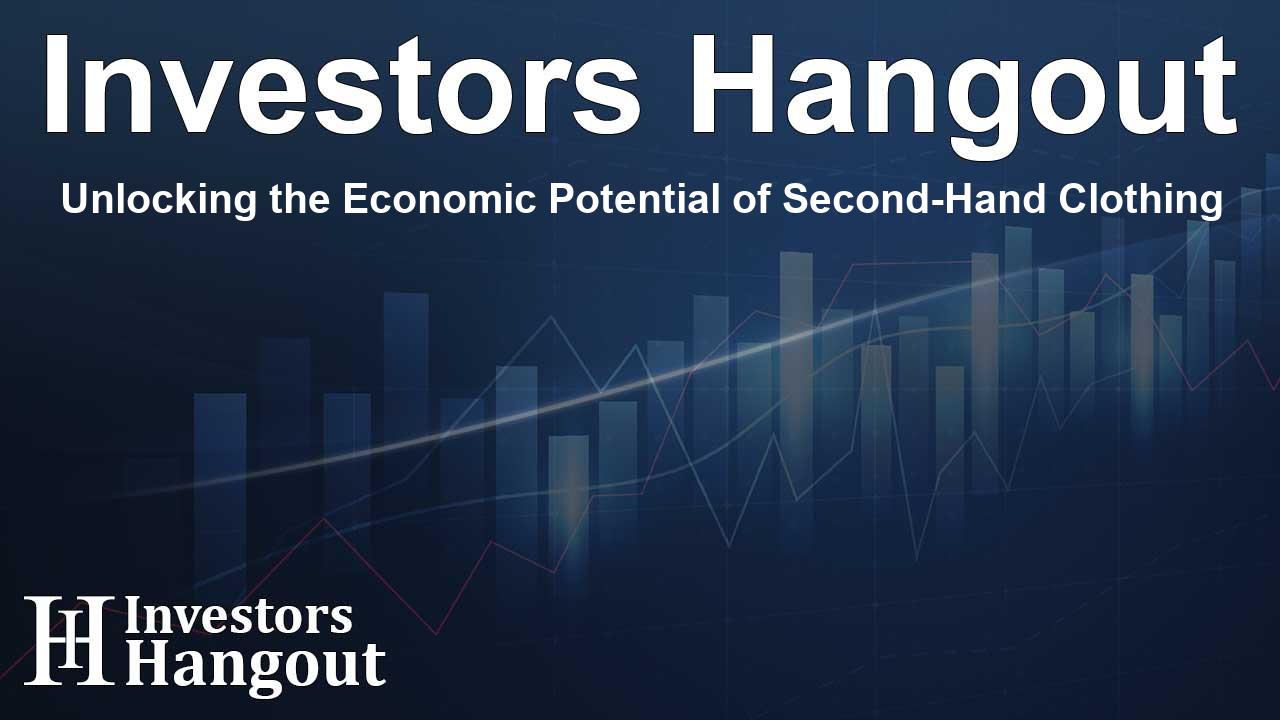Unlocking the Economic Potential of Second-Hand Clothing

The Impact of Second-Hand Clothing on Global Economies
Recent insights reveal that the second-hand clothing sector is catalyzing billions in economic contribution while fostering green job growth across multiple regions. This emerging market is becoming increasingly significant in achieving sustainability goals and ensuring a circular economy.
A Financial Boost for Communities
The second-hand clothing industry has emerged as a powerhouse, contributing an estimated total of €7 billion (approximately $7.6 billion) to the economies of Europe and beyond. In particular, the sector generated around €3 billion (or $3.2 billion) in direct economic contribution. Notably, Germany and the UK are at the forefront, with contributions of €670 million and €420 million to their GDP, respectively.
The Role of Employment in the Sector
In addition to its impressive financial inputs, this sector is also generating substantial employment opportunities. In recent assessments, it was found that this industry supported approximately 150,000 jobs across Europe, with a remarkable emphasis on green roles. This is particularly significant as it provides avenues for individuals, including those with less formal education, to find stable employment.
Diverse Workforce Representation
A striking 79% of this workforce comprises women, reflecting the sector's inclusive nature. Moreover, many job opportunities are emerging in lower-income countries, providing crucial support to economies that may be struggling.
Bridging Economies and Cultures
This comprehensive report sheds light on the entire value chain of the second-hand clothing sector, illustrating how it fosters economic connections between the Global North and the Global South. The movement of used clothing to areas of high demand ensures that garments continue to circulate, meeting social needs while aiming for environmental sustainability.
Economic Aid and Poverty Alleviation
An impressive aspect of this industry is its role in poverty reduction and entrepreneurship, contributing to economic vitality by creating jobs for individuals who might otherwise face unemployment. For example, in certain regions, second-hand clothing sales have bolstered local economies significantly.
Regional Contributions to GDP
Examining individual country contributions reveals noteworthy statistics: in Ghana, the influx of second-hand clothing from Europe is estimated to have contributed $76 million to local GDP. Meanwhile, Kenya saw contributions around $17 million, and Mozambique benefited from approximately $10.7 million. Such data points underscore the sector's far-reaching impact.
Import Trends in Second-Hand Clothing
In recent years, up to 47% of second-hand clothing imported into Ghana has originated from Europe. Conversely, Kenya and Mozambique display varying trends, with a decreasing share from the EU while still benefiting from overall imported second-hand clothing growth.
Challenges and Opportunities Ahead
This report emphasizes the need for policymakers to take action to support sustainable practices within the second-hand clothing sector. Without sound regulatory frameworks, this sector risks losing ground to fast fashion retailers that often compromise quality for cost.
The EU's Waste Framework Directive
There are ongoing discussions on amending the Waste Framework Directive, which directly impacts the second-hand clothing trade. It is crucial for stakeholders to seize this opportunity to advocate for sustainable textile practices.
About Oxford Economics
Founded in 1981, Oxford Economics has rapidly developed into a leading global advisory firm, providing critical economic analysis and insights to more than 200 countries and numerous industries. They support businesses and governments alike with valuable forecasting and strategic guidance.
About Humana People to People
Humana People to People operates with a mission to foster humanitarian and sustainable development through independent associations, implementing social development projects and responsible practices in numerous countries.
About Sympany+
Dedicated to sustainable circular textiles, Sympany+ emphasizes closed-loop systems to address textile waste and promote efficient reuse, ensuring working conditions adhere to high ethical standards.
Frequently Asked Questions
What is second-hand clothing's contribution to the economy?
Second-hand clothing contributes significantly to GDP, with an estimated total of €7 billion across various regions.
How many jobs does the second-hand clothing sector create?
Approximately 150,000 jobs were supported by the sector, with a focus on green jobs and inclusivity.
Which regions benefit most from second-hand clothing imports?
Countries like Ghana, Kenya, and Mozambique have seen substantial economic benefits from second-hand clothing imports.
Why is the second-hand clothing sector important for sustainability?
The sector promotes sustainability by extending the lifecycle of garments, reducing waste, and creating jobs, thus supporting climate goals.
What challenges does the industry face?
The second-hand clothing sector faces challenges related to competition from fast fashion and requires supportive regulatory frameworks to thrive.
About Investors Hangout
Investors Hangout is a leading online stock forum for financial discussion and learning, offering a wide range of free tools and resources. It draws in traders of all levels, who exchange market knowledge, investigate trading tactics, and keep an eye on industry developments in real time. Featuring financial articles, stock message boards, quotes, charts, company profiles, and live news updates. Through cooperative learning and a wealth of informational resources, it helps users from novices creating their first portfolios to experts honing their techniques. Join Investors Hangout today: https://investorshangout.com/
Disclaimer: The content of this article is solely for general informational purposes only; it does not represent legal, financial, or investment advice. Investors Hangout does not offer financial advice; the author is not a licensed financial advisor. Consult a qualified advisor before making any financial or investment decisions based on this article. The author's interpretation of publicly available data shapes the opinions presented here; as a result, they should not be taken as advice to purchase, sell, or hold any securities mentioned or any other investments. The author does not guarantee the accuracy, completeness, or timeliness of any material, providing it "as is." Information and market conditions may change; past performance is not indicative of future outcomes. If any of the material offered here is inaccurate, please contact us for corrections.